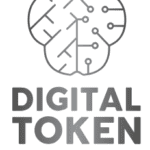Have you ever wished you could change something about yourself or your environment? Maybe you want to have a different eye colour, a stronger immune system, or a more sustainable crop. Or maybe you want to cure a genetic disease, create a new species, or enhance a human trait. These are some of the possibilities that gene editing offers, a process of altering the DNA of living organisms, such as plants, animals, and humans.
DNA, or deoxyribonucleic acid
Is the molecule that carries the genetic information of all living things. It consists of four types of nucleotides, abbreviated as A, T, C, and G that form a double helix structure. The sequence of nucleotides determines the characteristics and functions of an organism, such as its appearance, behaviour, and metabolism. Genes are segments of DNA that code for specific proteins, which are the building blocks and regulators of life.
Gene editing is the process of adding, removing, or changing nucleotides in a specific location of the DNA, resulting in a change in the gene expression and function. It can be used to correct mutations, insert new genes, or modify existing genes. Gene editing can be performed in vitro (in a test tube), in vivo (in a living organism), or ex vivo (in cells extracted from an organism and then returned to it).
There are several methods of gene editing
Such as zinc finger nucleases (ZFNs), transcription activator-like effector nucleases (TALENs), and mega nucleases. However, the most widely used and powerful gene editing tool is CRISPR-Cas9, which stands for Clustered Regularly Interspaced Short Palindromic Repeats and CRISPR-associated protein 9.
CRISPR-Cas9 is a gene editing tool that was discovered in bacteria, where it acts as an adaptive immune system against viruses. CRISPR is a sequence of repeated DNA segments that are separated by spacers. Which are derived from the DNA of previous viral invaders. Cas9 is an enzyme that can cut DNA at a specific location, guided by a CRISPR RNA (crRNA) that matches the target DNA sequence. Together, CRISPR and Cas9 form a complex that can recognize and destroy foreign DNA.
Scientists have harnessed the power of CRISPR-Cas9 to edit the genomes of various organisms, such as bacteria, yeast, plants, animals, and humans. The process involves designing a synthetic CRISPR RNA (crRNA) that matches the target DNA sequence, and a trans-activating CRISPR RNA (tracrRNA) that binds to the crRNA and the Cas9 enzyme. Alternatively, a single guide RNA (sgRNA) that combines the crRNA and the tracrRNA can be used.
The CRISPR-Cas9 complex is then delivered to the cells of interest, where it binds and cuts the target DNA, creating a double-strand break. The cell then repairs the break using one of two mechanisms: non-homologous end joining (NHEJ) or homology-directed repair (HDR). NHEJ is a fast and error-prone process that often results in insertions or deletions of nucleotides, which can disrupt or inactivate the gene. HDR is a slower and more precise process that uses a template DNA to repair the break, which can introduce a desired change or a new gene.
CRISPR-Cas9 is a Revolutionary
It is a gene editing tool that allows precise and efficient modifications of the genome. Many advantages over other gene editing methods, such as simplicity, versatility, specificity, and scalability. It is simple, because it only requires a single guide RNA and a Cas9 enzyme to target any DNA sequence. Versatile, because it can be used to edit multiple genes at once, or to activate or repress gene expression. It is specific, because it can be designed to minimize off-target effects, or unintended changes in other parts of the genome.
CRISPR-Cas9 is a powerful tool that has many potential applications in various fields, such as biotechnology, agriculture, medicine, and bioengineering. For example, CRISPR-Cas9 can be used to create genetically modified organisms (GMOs). Such as crops that are more resistant to pests, diseases, or environmental stress. Animals that are more productive, nutritious, or disease-free. CRISPR-Cas9 can also be used to create gene drives. Which are genetic elements that can spread a desired trait throughout a population. Such as mosquitoes that are unable to transmit malaria or dengue.
Social Questions and Challenges
However, CRISPR-Cas9 also raises many ethical and social questions and challenges. Such as safety, regulation, ownership, and morality. For example, CRISPR-Cas9 poses the risk of unintended consequences. Such as off-target effects, genetic instability, or ecological disruption. Which could harm the health and well-being of humans and other organisms. CRISPR-Cas9 also faces the challenge of establishing clear and consistent rules and standards for its use and oversight. Such as who can use it, for what purposes, and under what conditions.
Gene editing is the process of altering the DNA of living organisms, such as plants, animals, and humans. CRISPR-Cas9 is a revolutionary gene editing tool that allows precise and efficient modifications of the genome. Gene editing and CRISPR-Cas9 have the potential to transform the world and benefit humanity. They also pose many challenges and uncertainties that require careful and thoughtful consideration and action.


